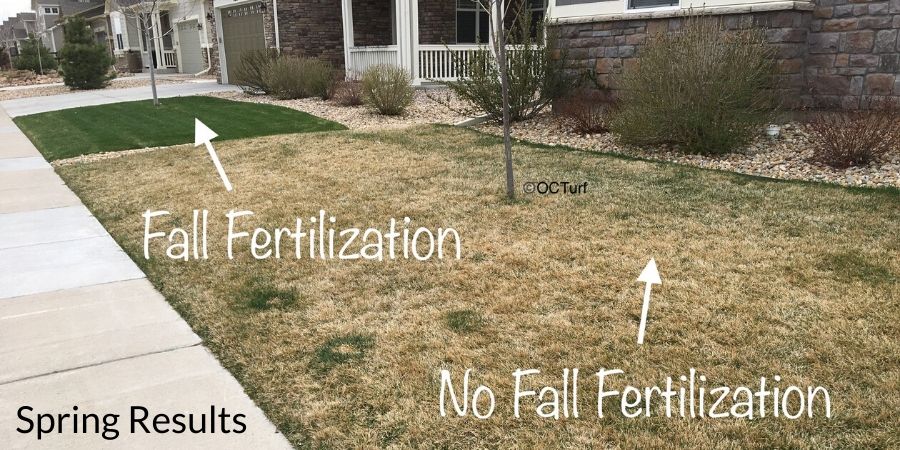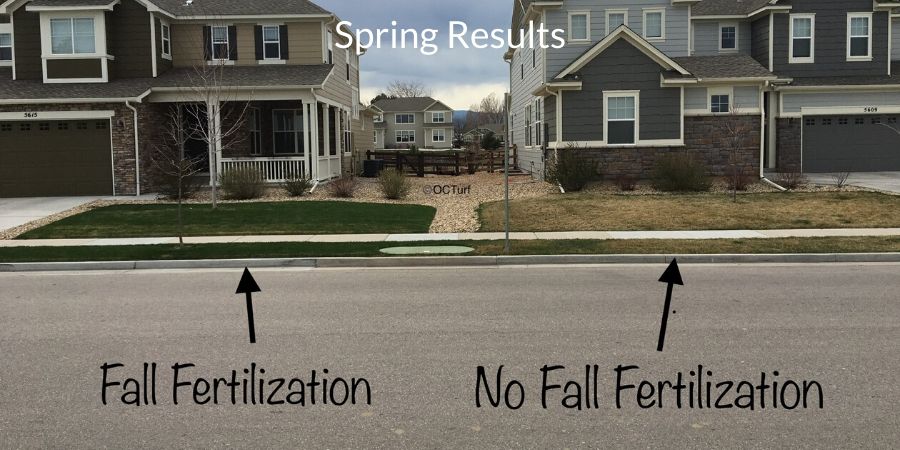Fall Lawn Fertilization: Cool-Season Grasses
October 26, 2019By: Kevin Ross - Turfgrass Agronomist
As a turfgrass agronomist, there is no doubt that one of the most popular questions I am asked is, “What’s the best time to fertilize my lawn?” The answer to that question, in my opinion, is fall! To be more specific, cool-season grasses should apply mid-October to mid-November. There are other factors you should consider when it comes to fall fertilization, besides the calendar, so let’s take a look.
First, let’s examine the timing of fall fertilization. There are two basic factors when it comes to nutrient uptake and growth of the turfgrass plant. Soil temperature and water use. In the fall, both of these factors slowly decline. With this decline, top growth or shoot growth, as it’s called, slows. However, root growth can continue for a period of time before dormancy truly occurs. So, the plant will still be able to take up nutrients to produce and store carbohydrates (food), but not produce a flush of growth. The plant will store these carbohydrates to protect itself for the winter ahead, and for initial growth in the spring. In addition, the plant may be able to increase its root mass during this time period. This root mass will benefit your lawn the following year to produce a much healthier plant. With these advantages, late fall dormant fertilization will generally give your lawn a great start come springtime.
Now let’s examine what type of fertilizer you should use for that late fall application. The best material to use is a fertilizer that contains a high percentage of slow-release nitrogen. The idea behind fall fertilization is to have a fertilizer release a small portion of the nitrogen content for plant uptake in the fall. However, the bulk of the nitrogen will carry over to the following year where it will be available to the plant.
So what’s the best fertilizer to use for fall fertilization? I personally use, and for many years have recommended to all my clients, Milorganite. Milorganite is a great fertilizer to apply anytime, but let’s discuss the reasons why it’s particularly great for a dormant fall application.
First, as a slow-release, it is very stable and leaching concerns are non-existent during the winter months. So, from that aspect, it is very environmentally safe and gives great peace of mind. From a turfgrass plant use, the real key to dormant fall Milorganite applications is all about the nutrient release. With the fall application, you are going to get just the right amount of nutrient release to accomplish the aforementioned root growth and food (carbohydrate) production. The bulk of the nutrients will then carry over to the following year without any leaching concerns. Also, consistent research results show that microorganisms, responsible for the mineralization (breakdown) of the slow-release nitrogen in Milorganite, remain active even in frozen soils. The percent of nitrogen mineralization throughout the winter period has been shown to be in the 15% range - documented multiple times through university research. This small fraction will be immediately available for plant use in the spring.
So, when it comes to my favorite time to fertilize, it’s late fall. And, when it comes to my favorite type of fertilizer, it’s Milorganite! So, get your Milorganite and spreader ready, because it’s prime time to fertilize!



